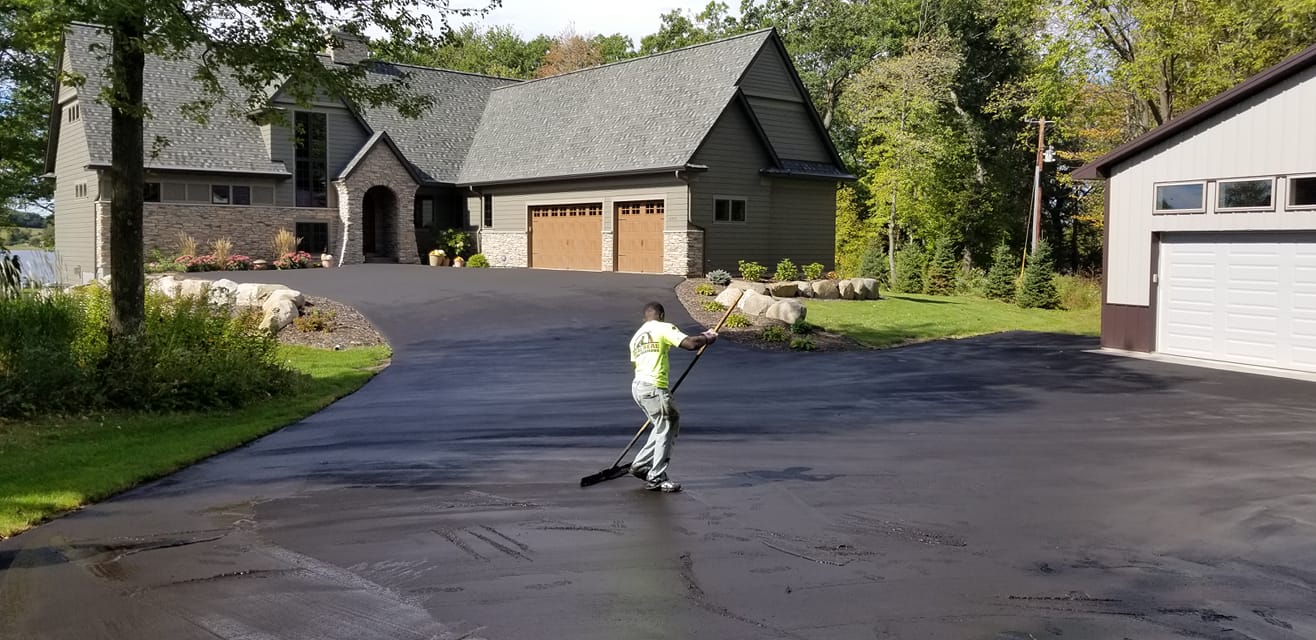 There are many advantages to choosing asphalt for your driveway rather than concrete. With that said, asphalt needs regular maintenance in order to stay in great condition. One of the best ways to protect your driveway and extend its lifespan is to periodically have it sealed.
There are many advantages to choosing asphalt for your driveway rather than concrete. With that said, asphalt needs regular maintenance in order to stay in great condition. One of the best ways to protect your driveway and extend its lifespan is to periodically have it sealed.
Resurfacing will be necessary at some point no matter what. However, it’s often difficult for homeowners to decide if they need to seal their asphalt or if it’s time for resurfacing. Thankfully, this simple guide will help you to make important decisions about sealing and resurfacing asphalt.
When Does Asphalt Need To Be Sealed?
There’s not a consensus on how often resealing is necessary. This is because you may have to have your driveway sealed more or less frequently based on your climate and your driveway’s condition. Driveways are more prone to issues in climates where winters are cold and summers are hot and humid.
If you’re based in Connecticut, resealing every two to three years should be a good solution. There are homeowners that prefer to have their driveway sealed each year, but this can lead to issues. The sealing could wind up cracking or peeling. Because of this, you’ll want to limit how often you seal your driveway.
The best approach is to assess your driveway and look for signs that it needs to be sealed. As an example, if your asphalt is starting to look weathered, or if you’ve been spotting small cracks, it’s likely that your driveway is due to be resealed. When the sealcoat is applied, hairline cracks will be sealed, and your driveway will look shiny and new again. If there are larger cracks in the driveway, however, they should be filled before you start resealing.
How Sealcoating Compares to Resurfacing
When your driveway has damage, like cracks, it’s possible for water to penetrate the area beneath the base of your asphalt. During the winter, this can be especially damaging. The water can freeze, which can cause cracks to expand, which can break your driveway. If you’re dealing with asphalt that’s broken and filled with large cracks, you won’t be able to fix the problem with rubber fill. If you’re dealing with serious breakage and deep ruts, resealing won’t fix the problem.
In situations like this, the only way to resolve your issues is to resurface your asphalt. When your driveway is in very poor condition, it will be the only way to take care of the problem. In fact, if you try to fill a very large section of your driveway with rubber, it can actually make your problems worse. When the weather is hot, the rubber can stick to your tires, which can cause you to rip out chunks of asphalt as you drive.
Why Cracks Need To Be Filled
If you seal your driveway every two to three years, you can keep many cracks from every forming. With that said, sealing is primarily about keeping your driveway looking great. It can’t fill in bigger cracks. Because of this, you’ll want to inspect your driveway on a regular basis. If you notice a crack, you’ll want to fill it immediately. It’s particularly important to do this before winter arrives. When water freezes and then thaws, it can do a lot of damage to your asphalt, which means a small crack can turn into a massive one in no time.
It isn’t that difficult to figure out when your driveway needs to be resealed. All you really need to do is keep an eye on your driveway. Be aware of signs of damage and fading. If you focus on giving your driveway the maintenance that it needs, you can put off resurfacing for a long time.

